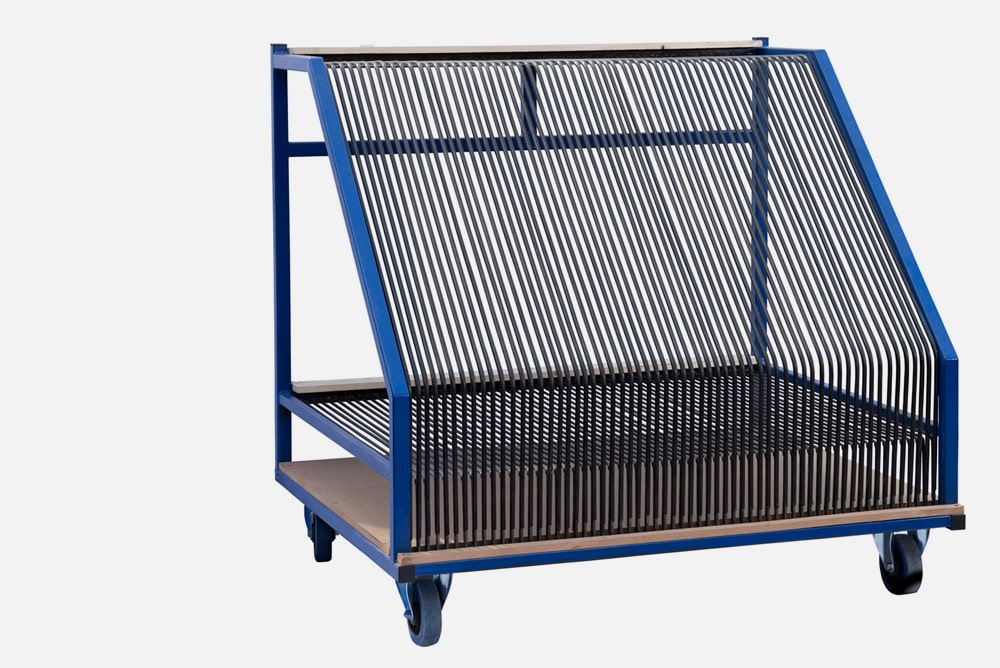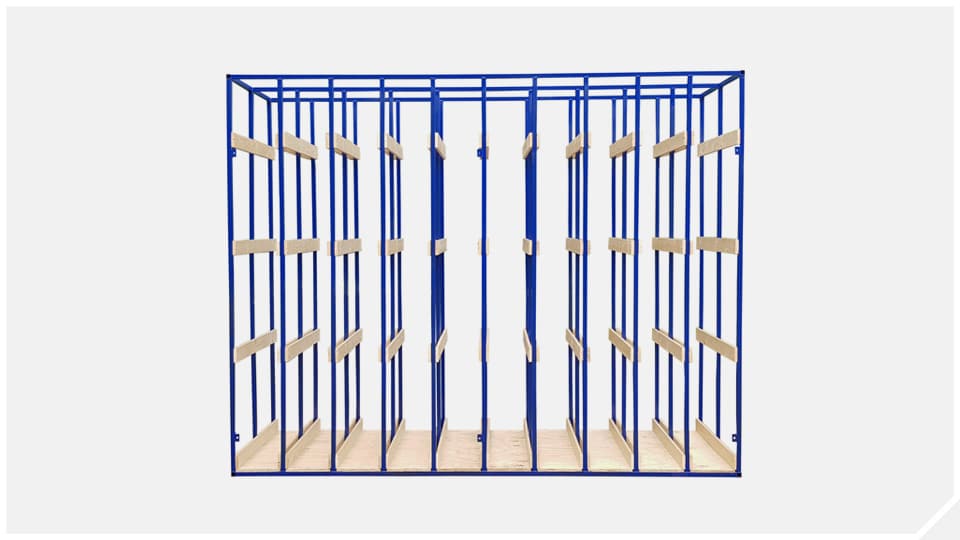The history of glass stillages, or specialised storage and transportation racks for glass products, can be traced back to the earliest days of glassmaking. In ancient times, glass was primarily used for ornamental purposes such as the production of jewellery and decorative objects. As such, the transportation and storage of sheet materials using glass stillages were not as much of a concern as they are today.

Glass Stillage History
As the glassmaking industry evolved, it became increasingly apparent that there was a need to use glass stillages for better storage and transportation solutions. The Roman Empire was one of the first societies to use glass on a large scale, primarily for the production of glass vessels. They used clay or wooden crates as a means of transportation but these methods proved to be insufficient for the fragile sheet materials and were not as sophisticated as glass stillages of today.
During the Middle Ages, glassmaking technology improved and glass became more widely used for various applications such as windows in buildings and containers for food and drink. As more people wanted glass products, there was more of a need to have stronger and more effective ways to store and transport them. Wooden crates and barrels were still the primary method of transport but they were often bulky and not well-suited for the fragile glass sheet materials and were replaced by glass stillages.
The Industrial Revolution in the 18th century brought about significant changes in the glassmaking industry. The introduction of machines greatly increased the efficiency of glass production and led to a dramatic increase in the amount of glass sheet materials being produced. However, this also increased the need for better storage and transportation solutions using glass stillages, as the sheer volume of glass products being produced created new challenges.
The 19th century saw the invention of the frame stillage. This was a metal rack or frame used for the storage and transportation of glass sheet materials using glass stillages, revolutionised the glass industry. Frame stillages are stronger and more durable than wooden crates and can be stacked, which greatly increased the amount of glass that could be transported and stored at one time. The frame stillage also provided better protection for the fragile glass products, as the glass could be placed on the frame rack in a manner that minimised the risk of damage.
As the 20th century progressed, glass stillages continued to evolve. The invention of plastic and other synthetic materials led to the development of glass stillages made from these materials, which provided additional benefits such as lightweight and corrosion resistance. Advancements in manufacturing technology also made it possible to produce more sophisticated glass stillages with multiple levels and more compartments.
Today, glass stillages are an essential component of the glass industry, with a wide variety of designs and materials being used to suit the different needs of different applications. The demands for safety, efficiency and sustainability have driven the development of glass stillages. They can be made using innovative designs such as being able to fold, stack or have different compartments, which can be adjusted to fit different sizes of glass products.
The use of glass stillages has also expanded beyond the glass industry and into other industries such as solar, construction and transportation. The needs for secure, durable and cost-effective storage and transportation solutions have prompted other industries to adopt the use of glass stillages as well. Here, at AWT International, we manufacture glass stillages for a variety of different sectors including hospitals, offices, factories, distribution sites and more.

In conclusion, the history and evolution of glass stillages have been closely tied to the growth and development of the glass industry. Glass stillages have played a key role in the history of glassmaking. In the earliest days of glassmaking, storage and transportation were not a major concern. However, nowadays glass stillages are essential to the efficient and safe storage and transportation of glass sheet materials, The demands of the industry continue to drive new developments and innovations in glass stillages that make them more versatile, efficient and sustainable. This ensures they will continue to play an important role in the glass industry and other industries in the future.
To enquire about our range of glass stillage and material handling products call AWT on 0161 723 1551 or email info@glass-handling.co.uk.